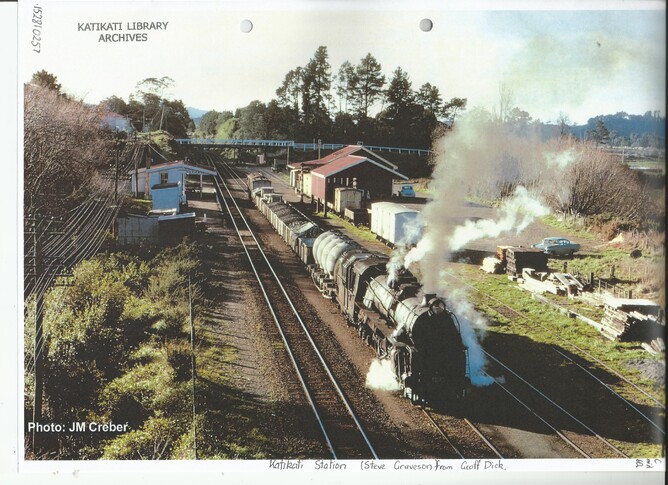Written by Kate McCarthy -
The following is an excerpt from Margaret McNaughton’s Life Story (in progress) reflecting on the grand era of New Zealand Railways.
"As I grew up in New Zealand during the Great Depression, between World War One and World War Two, most New Zealanders were of English, Scottish or Irish descent, or Maori. All were poor by today's standards. There was no extreme wealth, but we were rich and secure in our lifestyle. As taxpayers we owned the New Zealand Railways, postal services, coastal shipping and telecommunication network. The railways were a big part of our lives as my father was a station manager and moved about with the job. The rail system covered New Zealand at a time when roading and road transport was poor. For example, Tauranga was cut off except by ship, as roads were so poor, until the railway went through in about 1928. The railways employed a lot of men: station staff, clerks, inspectors of both the train services and 'permanent way' (as the rail tracks were called). There were guards, porters and refreshment room staff. 'Gangers' lived in small huts in railway yards and attended to the maintenance of rail tracks and bridges.
"There were so many different trains moving across the country at the time. Ballast trains with special trucks that tipped to release the metal loads. Circus trains with carriages as living quarters for circus people, and cages for lions, monkeys, bears, which were sealed off when travelling. Elephants and horses also travelled in this manner. The heads of the elephants could be seen over the top of the cage, the elephant watching, with its trunk at the bottom outlet hoping for a carrot or apple. These trains were 'shunted' onto a siding for the two or three days while the circus was in town. There were also sheep trains - many trucks of sheep going to the works. Excursion trains were available at holiday times.
When royalty came to New Zealand there were special trains, elaborately decorated with Union Jack flags, bunting and furniture, to transport their entourage through the country. During both world wars there were troop trains, which usually headed for a major port where the troops joined ships to transport the soldiers to war zones. The railway stations were centrally located in all the towns, close to hotels and boarding houses, with taxi stands and shops close-by.
"Wellington Railway Station was a grand and beautiful building, built around 1935-36. The large dining hall tables were covered with white damask cloths and matching serviettes, and waitresses wore smart uniforms and caps. The restrooms had attendants, and it was possible to take showers. The station master wore a 'frock coat' adorned with gold braid, and there were always lots of porters to assist travellers. Book stalls were well stocked, and this station was always a hub of activity, and kept very clean. In the forecourt the imposing figure of a Maori warrior stood prominently.
"I am sad to witness the loss of many train services, and transportation of heavy goods on our rail system throughout New Zealand over the past decades. It was a system that worked well and was enduring. A grand era of the past that is lost today."
TAGS
Memories of a past grand era - New Zealand Railways
November 30, 2020

